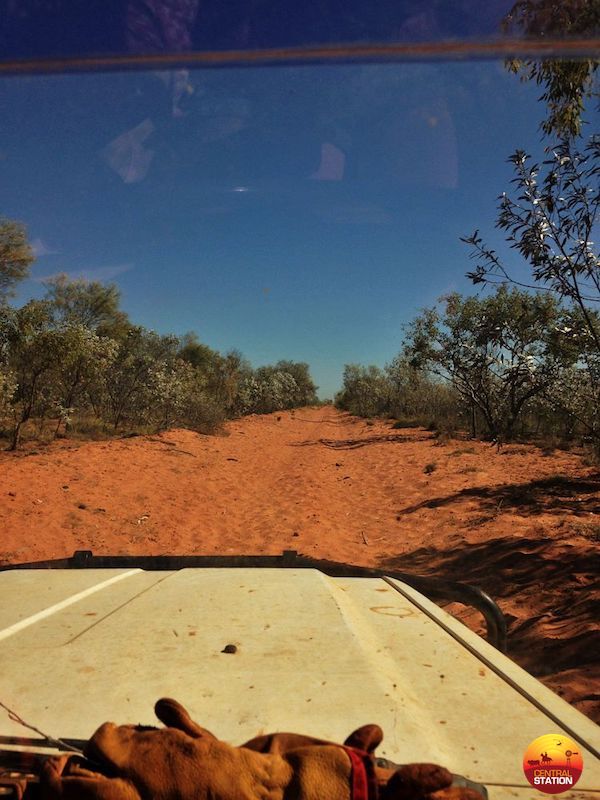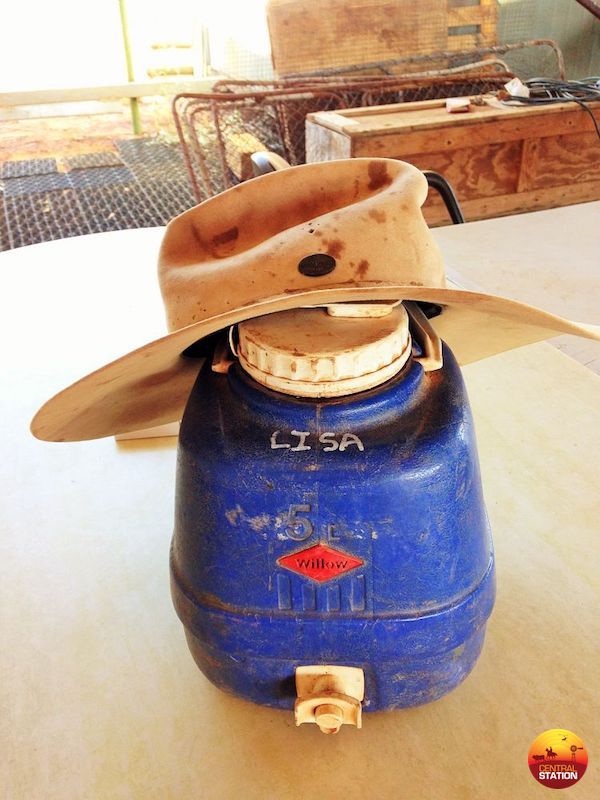The red outback – part 1
Host: Dampier Downs Station
Written by Lisa Sentfleben – Backpacker/Stationhand, Dampier Downs.
Lisa worked for us last season – one of our many successful backpackers. Below is her experience in her own words.
Red dust. Shimmering heat. Endless dry landscape. Silence. A chirping noise every now and then. Underneath the rabbit skin cowboy hat my hair is sticking to my sweaty head. Arms and legs are covered in dirt and scratches. I put my gloves back on, grab another roll of barb wire, and keep on walking.
I’m living in the Kimberley, Australia’s north-west. Working on a cattle station as a Jillaroo – the Australian name for a cowgirl. It’s not like in the movies. Well, it probably is. Just not that romantic. We don’t ride horses and not everything goes smoothly and in the right order. No, we’re driving 4-wheel-drives, flying helicopters, getting called from one job to the other via mobile radios. From the early dawn ’til far after the sun sets behind the few isolated dry bushes you are running, yelling, sweating. At night you close your eyes, in a small room in the quarters, where the jillaroos and jackaroos stay. Between spiders and grey concrete. Still listening to the wild lowing of the newly mustered scrub bulls in the yard. This is my life for three months. I’ll tell you about it. If you’re tough enough, continue reading.
I arrived from Perth, where I was living a well civilised life: job, friends, my own flat close to the beach. Leaving all this behind I board the plane. “Just“ heading up the coast, to the far north of Western Australia, but it still is a three hour flight. Pretty quickly the landscape far below changes from city and houses to brown with a few bushes, just brown, red. On the left is the constant, endless blue Indian Ocean.
Getting off the plane in Broome, into a tiny ancient appearing airport, I begin to sweat in this humid heat straight away. At that point I never thought that I would end up spending half a year up here in this remote little place, surrounded by a sea full of crocodiles, itinerant Aborigines, giant cattle stations, and red desert.
My boss for the next months picks me up: cowboy hat, ripped jeans, leather boots and a face and hands that bear witness to rough work under sun. During the three hour drive over gravel roads and through the dry bush I’m excited to hear about the work, the life out there, simply what‘s lying ahead. Results of the conversation are: some people make it, some people don’t – those that don’t often don’t last longer than three days, changing tyres is basic knowledge (I will never forget that I didn’t know the translation of “tyre” at that point . . . ), we will be driving trucks and tractors, we live together with 12 cattle dogs (yay – I’ve been afraid of dogs my entire life. Until that point. Again. Heaps of things changed up there), lots of Europeans left during their stay up there ’cause they couldn’t handle the isolation and loneliness, there is no separation between male and female – jobs must be done by everyone, jobs must be done as you are told, and they must be done straight away. And you will be yelled at. But don’t take it personally. Right. Now I’m really excited. I turn my head towards the window, still the same dry sand. No one around. The hot sun is blinding my eyes.
 Miles and miles of endless dirt roads.
Miles and miles of endless dirt roads.
After hours we can see a dark spot in the far shimmering heat in the wide and dry lonely landscape: the homestead. As we’re coming closer, I have to jump out of the car every few minute to open and close gates. It’s quiet out here. Really quiet. The homestead is a few self built houses: the headquarters where the boss, his wife, and his father live (who came from America in his early thirties and built up the station all by himself), the workshop, the quarters for us station hands and the boss’ sisters house. Plus a couple of minutes walk away the cages for the dogs. On the other side of the homestead is the yard, which at times can host thousands of bulls, steers, and cows. All together we are seven people on a 265,000ha property.
You can drive for hours without leaving the property, without seeing a street or a sign, without seeing anyone, without any connection to the world out there – no phone signal, nothing. That’s why I have to learn a lot during the first days: never turn off a car when you’re out there by yourself, never leave the car when you’re lost, never turn your back towards the bulls when you do a job, always carry a spare tyre with you, every kind of tool, a knife, a shovel, pliers, and a 5 litre bottle of water.
 Just some of the daily essentials.
Just some of the daily essentials.
I have to learn the names of every single yard, paddock, water tank as well as how to get there. You’ve got to be confident in changing tyres, driving in soft sand, and get the car out when you’re stuck. Sometimes when I was all alone out there, in the heat and the silence between dry wilderness and bulls I was thinking back one year ago, when I was sitting in my university, staring out of the window and dreaming about Australia. And here I am. Living the real outback experience.
Read part 2 tomorrow.
